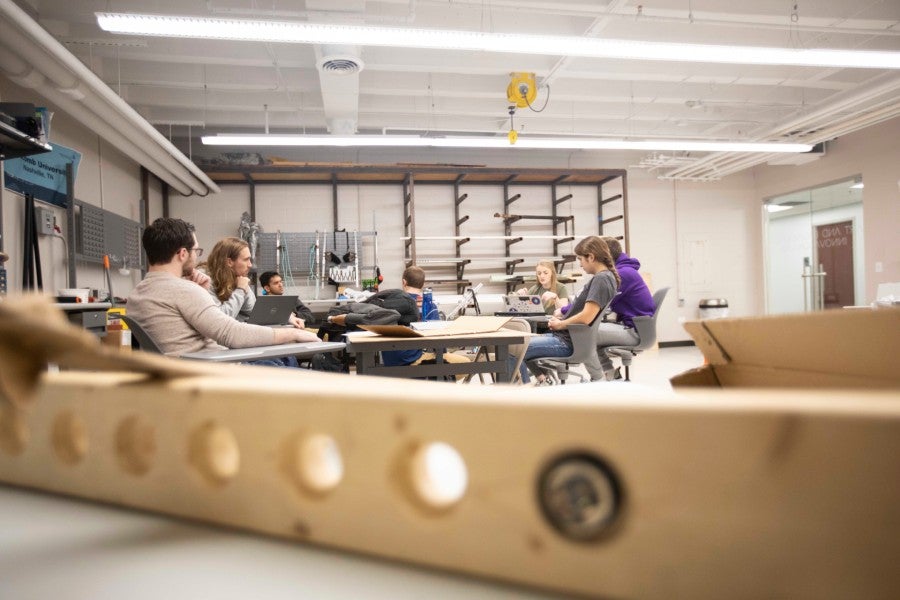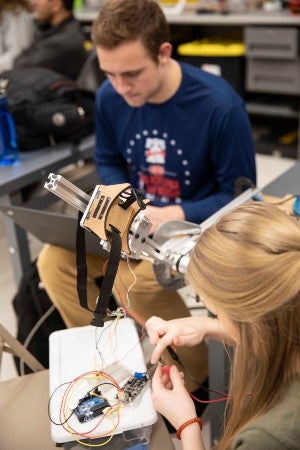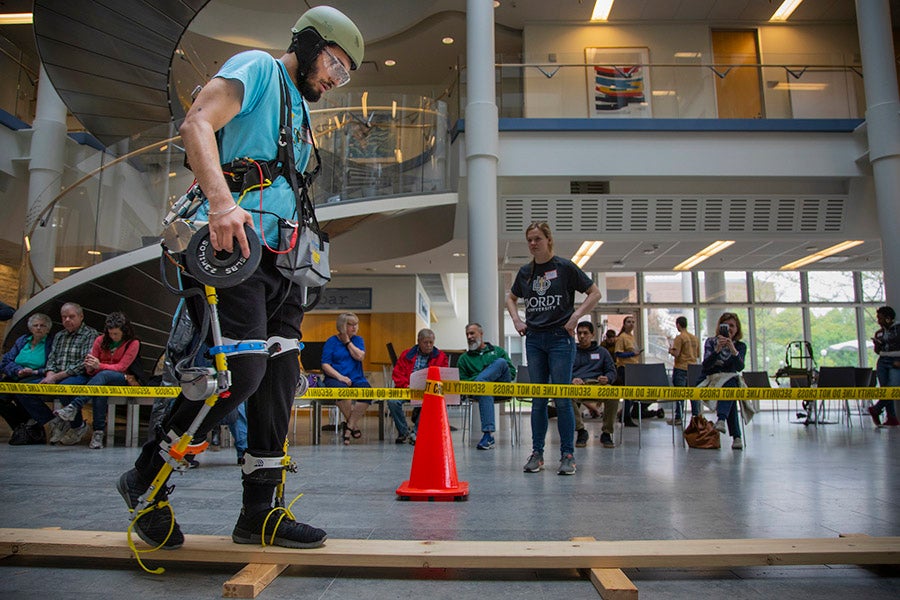Engineering seniors create Lipscomb’s first exoskeleton
Lipscomb students work to get the world one step closer to a real-life Iron Man.
Janel Shoun-Smith | 615.966.7078 |

The exoskeleton senior project team at work in the new innovation lab in McFarland Science Center.
Mechanical engineering senior Nathan Foote and his team of fellow Lipscomb seniors are working this semester to get the world one step closer to a real-life Iron Man.
A team of eight seniors is designing an exoskeleton, a mechanical suit to augment the wearer’s strength and abilities, as a senior design project, to compete in the Applied Collegiate Exoskeleton Competition at Michigan State University in May.
“Our goal is to lay the groundwork for future teams to be competitive in the competition,” said Foote, a Michigan native who learned of two-year-old ACE competition through a professional development email and took the initiative to spark the senior design project at Lipscomb. “We want to create an exoskeleton to meet all the criteria. So whether or not we compete well is not as important as laying the groundwork for future teams.”
They have made a good start. During the fall they researched the latest developments in exoskeleton technology, determined the scope of the project, made proof-of-concept models and tested electrical components.

The senior design project provides students the experience of taking a project from initial design to manufacturing.
This spring, after the ACE rules were released in December, the students are building the actual exoskeleton to take to Michigan.
Their exoskeleton is a mechanical frame meant to move around the leg, and designed to support weight at the back and along the legs. Currently exoskeletons are primarily being used for military purposes to help soldiers carry weight, by factory workers who have to lift and haul heavy items and for rehabilitation to help re-train people how to walk and function, said Foote.
Eight students are working on Lipscomb’s exoskeleton: Foote, Leah Hampton, project manager; Carson Littlefield, technical writing lead; Jeremiah Niehls, electrical lead; Seth Mann, frame lead; Mark Sewkarran, in charge of how it is attached to the human body; Will Ukazim, in charge of how the skeleton actually moves; and Lauren Heinrich, manufacturing lead.
The senior design project provides students the experience of taking a project from initial design to manufacturing, to practice collaboration and teamwork and see what the actual workplace experience can be like.
The ACE competition is an excuse to create an exoskeleton to be like Iron Man, laughs Foote. The student team that started the competition at the University of Michigan is named STARX, named after Tony Stark, Marvel’s fictional Iron Man and standing for Strength Augmenting Robotic Exoskeletons.
At the competition, the wearer of the exoskeleton has to go through an obstacle course, similar to a Firefighter’s Physical Agility Test, Foote said. It also has to be worn by three different people, so it has to be adjustable.
Foote, the lead engineer for the team, said his enthusiasm for the exoskeleton project spurred from his passion to create spacesuits someday. He also previously participated in Lipscomb’s rocket building team, as his love of spacesuits sparked an interest in the aerospace industry.
But now he is looking to the biomechanics industry for his future career and hopes to attend graduate school after completing his undergraduate degree at Lipscomb.

The University of Michigan team, named STARX, honoring Marvel's Tony Stark, won first place with this exoskeleton created for the 2019 ACE competition. Photo by Michigan engineering.